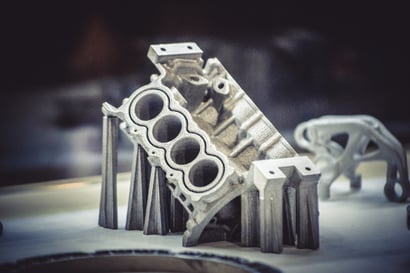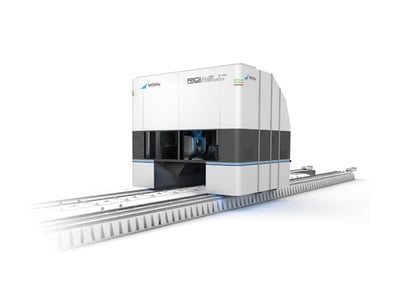Titanium and its alloys are essential in today's manufacturing industry. They are common in aerospace parts because of their excellent ratio weight/hardness, outstanding corrosion resistance, and relative resistance to high temperatures.
However, everything is not pure gold. Titanium has become a permanent challenge for machining since it is a more demanding material compared to others. But Titanium can be perceived as easy and quick to manufacture if the correct machine tool features are used.
Excellent mechanical properties
Titanium alloy has excellent mechanical properties. It weighs less than steel and copper. Compared to aluminum, it is heavier but more robust. At the same time, Titanium expands much less than aluminum and is closest immune to corrosion. In addition, the benefits that make Titanium a valuable and high-performance metal are also why Titanium is challenging to process. Its poor thermal conductivity, high hardness, low modulus of elasticity, and other properties make Titanium alloys more challenging to process than other metal materials.

What are the challenges of machining Titanium?
Producing components from Titanium means removing up to 90% of the material before finalizing the product. All debris that is removed must be carefully controlled so that it doesn't clog up crevices in the workpiece or become lodged in the spindle housing, which could entangle the tool and impair its functionality.
Titanium is a poor conductor of heat. Therefore, heat caused during machining does not dissipate quickly enough. The heat is transferred to the tool instead of being carried away with the chips. The cure is a tool designed to manage the heat and make the chip easier to remove, and a machining center with an excellent coolant system.
The low Young's modulus of Titanium causes springs back and vibrations during machining. The tool bounces on the surface and causes friction between the tool and the workpiece greater than the cutting effect, affecting accuracy and reducing the tool's life span.
Titanium's hardness properties make its machining quite tricky due to the vibrations it can easily entail. Tool manufacturers, like SECO Tools, made great signs of progress to cut Titanium smoothly with surface quality easier to reach. However, Titanium machining performances also depend on the mechanical rigidity from the tool/spindle up to the machine axis kinematics and guiding through the complete machine structure.
Machine manufacturers tightly followed this race for improvement by designing equipment capable of dealing with vibration dumping and structural steadiness. Modig is one of them.
Best machine features for Titanium Machining
Although machine designs and architectures are plenty in the machine-tool market for machining Titanium, some machine design features are essential to include since Titanium has little room for costly approximation.
One of these design factors is machine material construction. Ideally, it should be made of cast iron as everyone recognizes its excellent dumping capacity, thermic stability, significant mass, and high rigidity compared to a welded steel structure.
Another parameter is the best dimensioning of the machine structure. A defined purposely restricted machining envelope has many advantages when milling Titanium. It allows machining with the most efficient machine behavior according to the part size. A machine with a large envelope machine dealing with medium or small parts will never perform as well as an adjusted dimension machine.
This parameter was applied by Modig when designing the RigiMill range. Its compact dimensioning offers optimal axes agility and efficiency within a machining clearance that regards many Titanium family parts in the aerospace industry.
RigiMill MG, Modig Machine Tool
Ideal machine architecture for Titanium Machining
One more consideration, and not the least, is machine architecture. The central machine axis kinematics and disposition are key to efficiency.
Every manufacturer must choose machine design depending on their market segment covering intention and pricing strategy. When machine efficiency must prevail, there is little compromise with quality. However, some solid architectural machine features can make significant differences.
Modig, in the case of the RigiMill, for example, chose not to integrate the Ram style but a moving cross-rail style as the vertical diving axis. The milling head is therefore moving up and down with constant over-hang, which is a significant guarantee of rigidity and accuracy. Read about RigiMill.


